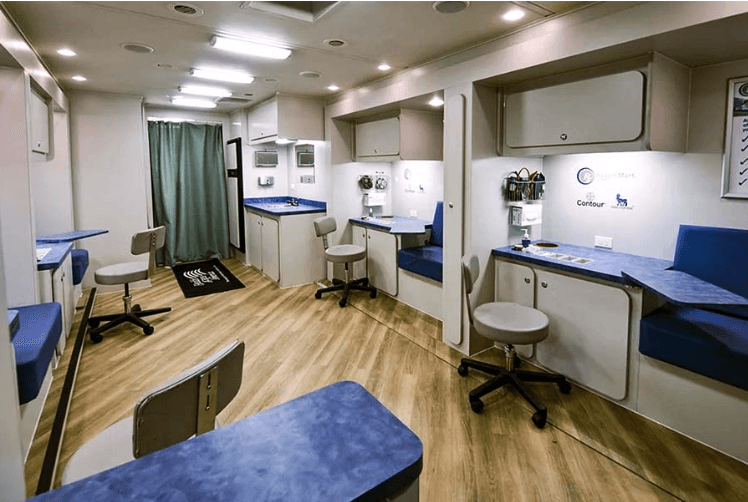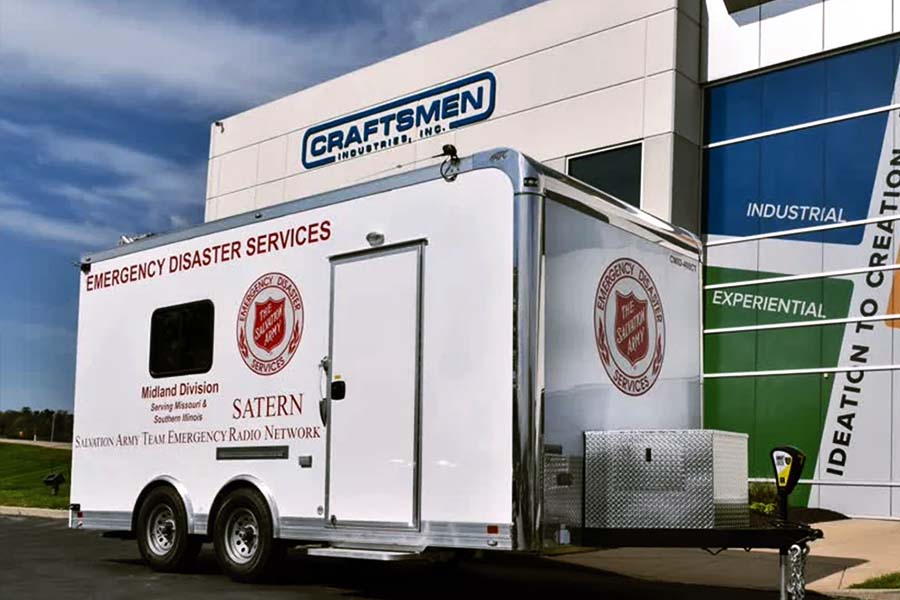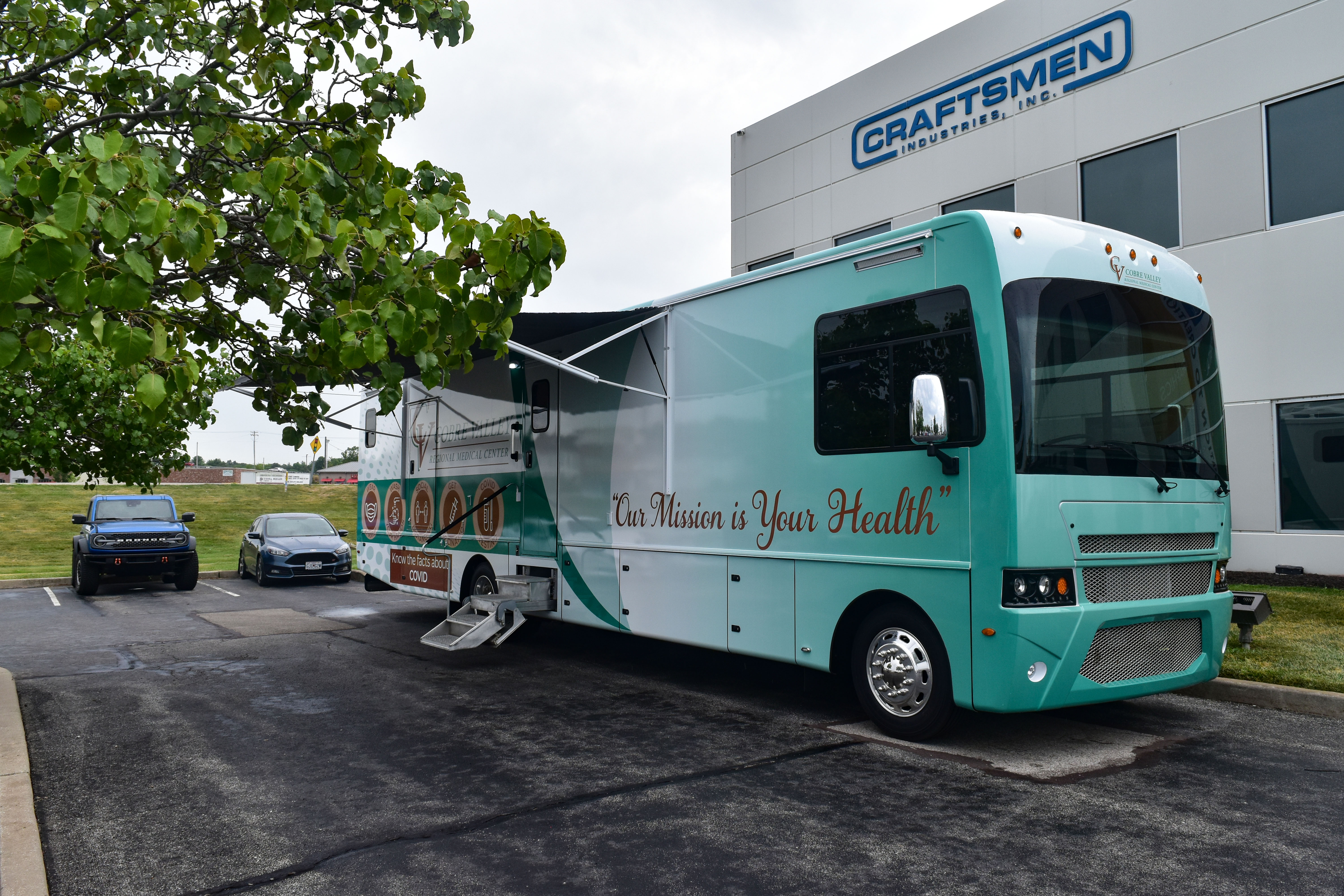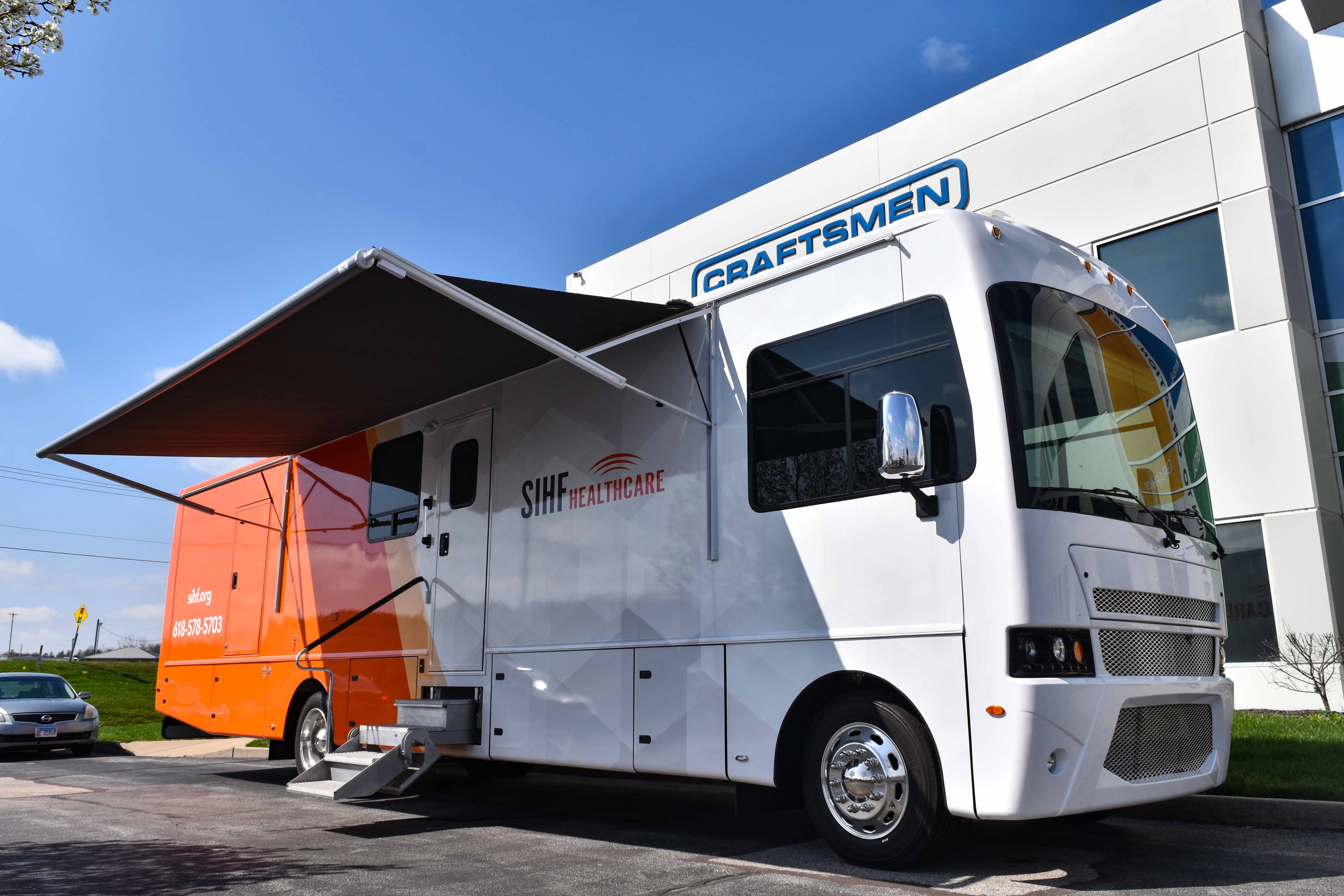How Are Mobile Command Centers Used for Surveillance?
Mobile command centers are crucial vehicles in emergencies and natural disasters. Besides providing a fast response to emergencies, mobile command...
7 min read
Craftsmen Industries May 28, 2025 9:05:11 AM

Mobile medical clinics are designed and built around patient safety and comfort. Imagine you’re living miles from the nearest hospital, facing long waits and rigid environments at every visit. Travel, crowded waiting rooms, and worry about cleanliness add stress just when care should ease it.
Mobile medical clinics solve those challenges with smart airflow, cleanable surfaces, easy access, and more features like coach-style vehicles give patients the safety and comfort they need. When design puts safety and comfort first, everything changes!
Read this blog to discover the essential design features that make mobile medical clinics both safe and welcoming for patients!
Safety is at the heart of any mobile medical clinic. When care comes on wheels, it faces unique challenges: tight quarters, shifting locations, and a steady flow of patients. Every detail must prevent harm and build trust, whether that means stopping germs in their tracks or keeping emergency gear within reach.
Well-planned safety features protect both patients and staff, and they guarantee smooth, uninterrupted care on the move.
Let’s take a look at the most important systems that keep mobile clinics secure and reliable, no matter where they roll out.
Many mobile clinics use antimicrobial panels and vinyl flooring for easy cleaning after each patient. Surfaces resist bacteria and wipe down quickly, so staff can sanitize exam tables, countertops, and door handles in minutes. Wall corners and crevices are sealed to prevent dirt buildup.
Why it’s a must-have:
Medical vehicles use lockable cabinets and drawers to keep tools, medications, and supplies organized. These drawers protect them from accidental spills or unauthorized access as well.
Temperature controlled refrigerators store vaccines and injectables at the right level, while built-in sensors alert staff if conditions shift especially in pharmacy trailers designed for mobile dispensing. Clear labeling and modular shelving help caregivers find what they need without delay.
Why it’s a must-have:
Mobile clinics put safety first with built-in panic buttons, two-way intercoms, and real-time GPS tracking. A quick press of a button alerts a central team or nearby support if staff need help.
Intercoms let team members communicate without leaving the exam area, which keeps patients calm and operations smooth. Also, GPS tracking links the clinic’s location to emergency services and command centers, so help can arrive fast when it matters most.
Why it’s a must-have:
A reliable ventilation system keeps air fresh and healthy inside a mobile clinic. Most units use HEPA filters to capture dust and airborne germs. The airflow is balanced, so clean air moves in while stale air is pushed out.
Regular filter checks and easy-access filter panels make maintenance quick and simple for mobile medical clinics. Proper air quality helps staff and patients breathe easier and lowers the chance of infection spread.
Why it’s a must-have:
Mobile clinics feature built-in wheelchair ramps or hydraulic lifts to help patients board and exit safely, even on uneven ground, as seen in truck-based clinics built for rugged terrain. Sturdy grab bars sit near doorways and seating areas to offer extra support while moving around inside.
Floors are low-profile to reduce tripping hazards and doorways are extra wide to accommodate walkers and scooters. These design choices make every visit smoother and more dignified.
Why it’s a must-have:
Comfort plays a key role in how patients feel about their care and whether they follow treatment plans. When mobile clinics offer cozy seating, steady temperatures, and soft lighting, patients relax and open up about their needs.
A welcoming atmosphere builds trust and makes it easier for people to keep appointments, ask questions, and stick to advice.
Let’s look at the specific design features that help mobile clinics create a calm, comfortable space where patients feel at ease from start to finish.
Modern mobile clinics rely on HVAC setups with zoned heating and cooling to keep every area at the right temperature. The driver’s cabin, waiting area, and exam room each have separate controls so that staff and patients stay comfortable no matter the weather outside.
Quiet fans and vents distribute air evenly without creating drafts or noise distractions during consultations. Digital thermostats keep track of the temperature and make changes automatically. Backup power makes sure the system stays up and running during long outreach events.
Why it’s a must-have:
Inside the clinic, exam tables adjust in height and tilt to match patient needs and clinician workflow. The seating features padded chairs with armrests that fold away for easy access. Tables, chairs, and equipment are arranged to create clear pathways to let staff move without squeezing past obstacles.
Each piece locks securely during transport but releases easily when setting up, so adjustments are quick. Rounded edges and durable upholstery keep furniture safe and long-lasting in daily use. This setup makes exams feel more personal and less clinical.
Why it’s a must-have:
Mobile clinics come equipped with clean sinks and touchless faucets, so patients and staff can wash hands easily before and after each exam.
These units also have privacy curtains around exam areas to let patients feel secure when changing clothes or during consultations. These small details make the clinic feel more like a standard medical office and less like a vehicle on wheels.
Why it’s a must-have:
Last but not least, mobile medical clinics also feature optimized lighting and acoustics. The adjustable LED exam lights let clinicians focus on precise work without harsh glare. Patients can benefit from even illumination that highlights details during checks but feels gentle on the eyes. Meanwhile, sound-dampening panels line the walls and ceiling to reduce outside noise and echo inside the unit. This keeps conversations private and cuts stress for both patients and staff.
Why it’s a must-have:
If you’re running a mobile medical clinic, are you sure it meets every requirement?
Operating a mobile clinic in the U.S. means you must follow both federal and state rules to keep care safe, legal, and high-quality.
Here’s what you need to check:
By checking off each of these points, you’ll keep your mobile clinic compliant, safe, and ready to deliver quality care wherever it’s needed.
Can mobile clinic designs be customized?
Absolutely. Mobile clinic designs are highly customizable to fit your specific services and workflow. You can choose the interior layout, storage options, and medical equipment you need. Climate control, lighting, and accessibility features can all be tailored. You can even add your branding and signage to make the unit uniquely yours.
What are the must-have safety features in a mobile medical clinic?
You need antimicrobial surfaces and easy-clean floors to stop germs, lockable storage for medicines and supplies, and clear emergency systems like panic buttons and GPS tracking. Good ventilation with HEPA or hospital-grade filters keeps air safe, and sturdy grab-bars plus ramps ensure patients board and exit without risk.
What power and water systems are best for reliable clinic operation?
A dual-power setup with a diesel generator plus shore-power hookup keeps you running when mains power isn’t available. For water, a pressurized freshwater tank and a separate gray-water tank work well, along with an electric or propane water heater for hot water on demand.
Can I customize the interior layout to fit my specialty services?
Absolutely. You can choose exam room size and shape, add procedure-specific cabinetry or equipment mounts, and configure storage to suit your workflow. Work closely with an upfitter to map out your space so every tool and work surface is exactly where you need it.
How often should HVAC filters and ventilation systems be checked?
Check your filters at least every three months, or more often if you’re in dusty or high-traffic areas. Inspect the ducts and vents for blockages at the same time. Replace filters immediately if they look dirty or airflow slows down.
With a steadfast focus on both safety and comfort, mobile clinics become more than vehicles, they become trusted care centers on wheels. Every feature, from antimicrobial surfaces to climate control, plays a vital role in making your mobile clinic both safe and welcoming.
Thoughtful design not only protects patients but also boosts satisfaction and trust in your services. When you choose the right combination of safety systems and comfort elements, you create a space that patients appreciate and staff rely on.
If you are ready to bring this vision to life, Craftsmen Industries is here to help. Explore custom mobile clinic solutions tailored to your needs by visiting and start delivering exceptional care on the move today!

Mobile command centers are crucial vehicles in emergencies and natural disasters. Besides providing a fast response to emergencies, mobile command...

As medical needs change, healthcare must move towards innovation. Mobile health clinics can provide more equitable care, by reducing health...

Mobile medical coaches are vehicles medically equipped to aid in underserved or otherwise inaccessible areas. If you are looking to purchase a mobile...